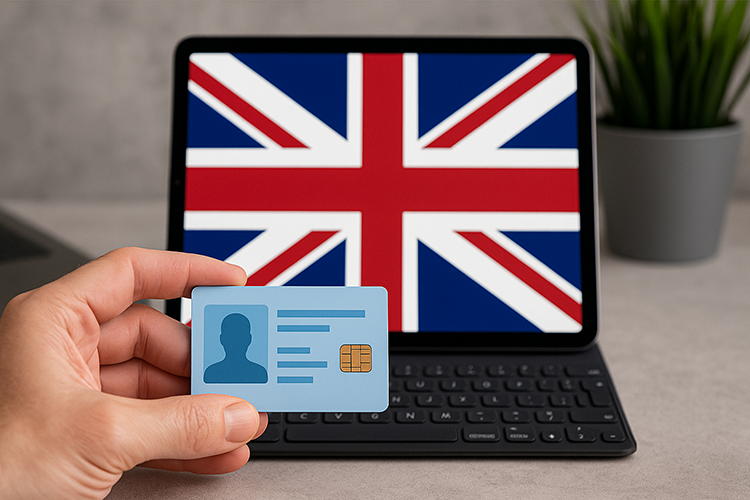2025-09-27
indicators

The British government has announced plans to introduce a mandatory digital identity card, known as the “Britcard,” for all adults by July 2029. The card would be tied to the right to work and access public services, but the proposal still requires consultation and new legislation. If it goes ahead, it would mark a sharp departure from the policy Britain adopted in 2010, when the Identity Documents Act repealed the previous ID card system and dismantled the national register. Until now, the UK has relied on a patchwork of non-compulsory systems such as GOV.UK’s “One Login” and the Digital Identity & Attributes Trust Framework. These initiatives have provided the foundation for secure authentication but have not been imposed as universal requirements. The introduction of Britcard would therefore represent a decisive step toward a compulsory, nationwide scheme. While Britain debates, Slovakia already operates a comprehensive digital identification system. Citizens are issued an electronic ID card with an embedded chip that functions as a standard form of national identification. It enables access to e-government platforms and the signing of official documents. Since December 2022, Slovakia has also introduced biometric cards, incorporating facial recognition and fingerprint data, which serve as the primary tool for authentication across public services. The UK’s new direction places it in line with broader European trends. Most EU member states issue national ID cards, and in 2024 Brussels adopted regulations requiring that by 2026 every citizen be offered an EU Digital Identity Wallet. The new framework, sometimes called eIDAS 2.0, has been refined through rules adopted in 2024 and 2025, with the goal of ensuring cross-border recognition of digital credentials. Estonia is often cited as the model case, where secure e-identities are used seamlessly across both public and private sectors, from healthcare and banking to contracts and voting. Globally, India’s Aadhaar programme illustrates the scale of what digital ID systems can achieve, but also their risks. Aadhaar was designed to improve welfare delivery and reduce fraud, but it has faced legal challenges over privacy and data protection. The Supreme Court eventually upheld its use for government services but restricted its mandatory adoption in the private sector, highlighting the balance between efficiency and civil liberties. The experience of COVID-19 has also shaped perceptions. Vaccine passes in the UK and the EU were primarily designed to certify vaccination or recovery status in order to reopen travel and venues. The European Union issued more than two billion such certificates, while Britain deployed the NHS Covid Pass through its app. Although concerns were raised about function creep, post-pandemic reviews concluded that while the systems carried privacy risks, they did not evolve into broader surveillance tools. Advocates of digital IDs point to convenience, faster service delivery, and reduced fraud as the main benefits. For governments, the attraction lies in stronger verification of identity, lower administrative costs, and better protection against misuse of benefits or tax evasion. Estonia demonstrates how a mature system can save time and simplify access to services. India shows how fraud can be reduced, though its challenges underline the need for strict legal limits. The risks remain substantial. Centralised databases are attractive targets for hackers, and if digital IDs become the sole gateway to essential services, technical failures could exclude vulnerable groups. Critics warn of “function creep,” where a system created for employment or welfare checks could be extended to policing or credit scoring. European regulations attempt to address these risks by mandating on-device storage and selective disclosure, but it is not yet clear whether Britain will adopt similar safeguards. Some commentators have compared the UK’s proposal with identity systems in authoritarian regimes such as China or North Korea. Analysts caution against such analogies, noting that the relevant comparison is with European systems built under GDPR and eIDAS, where data protection and oversight are embedded into law. For those opposed to any digital identity, the idea of living “off the grid” is often raised. In practice, avoiding digital credentials would severely restrict access to banking, employment, travel, and healthcare. Experts argue that the more effective path is to demand robust protections, clear limits on use, independent audits, and alternative ways to access services without relying on smartphones or internet connections. Digital ID is already a reality across much of Europe, with the EU’s wallet due to arrive in the next two years and Slovakia embedding its system into daily governance. India has demonstrated the benefits of scale as well as the dangers of weak safeguards. Britain’s proposal is therefore less about innovation and more about whether it can catch up without repeating past mistakes. The ultimate question is whether Britcard becomes a tool of empowerment or a source of controversy. That outcome will depend less on the technology than on governance: whether the UK commits to decentralised credentials, minimal central data collection, legally enforced limits on use, robust non-digital alternatives, and transparent oversight. Without those, scepticism is unlikely to fade.

